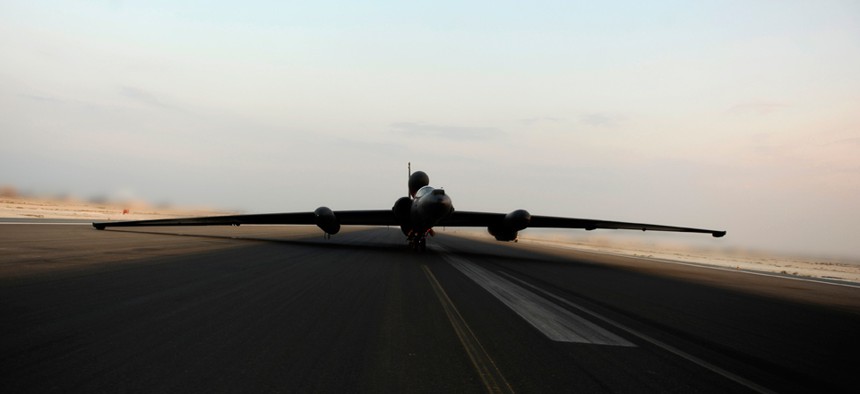
Defense Department file photo
FAA Says U-2 Spy Plane Definitely Scrambled Air Traffic Control Computers
Air Force had previously denied that their plane was the one to blame.
After some confusion over whether a Soviet-era spy plane caused delays at a number of airports across the U.S. last week, the Federal Aviation Administration confirmed that the U-2 plane was, indeed, at fault. The Air Force had previously denied that their plane was the one to blame.
According to NBC News, which broke the story, the FAA admitted the error in a statement, saying that the air traffic system they use, called ERAM, "experienced problems while processing a flight plan filed for a U-2 aircraft that operates at very high altitudes under visual flight rules.” The statement continued to explain that though the high-altitude plane was flying at about 60,000 feet, the computer responded as though it was flying at about 10,000 feet which, apparently, made it malfunction:
The computer system interpreted the flight as a more typical low altitude operation, and began processing it for a route below 10,000 feet. The extensive number of routings that would have been required to de-conflict the aircraft with lower-altitude flights used a large amount of available memory and interrupted the computer’s other flight-processing functions.
This seems to mean that if an uncharted plane was actually at risk of colliding with others, the L.A. Air Route Traffic Control Center in Southern California's main computer system might respond by having the computer version of a panic attack. Which, obviously, is not ideal.
The Wall Street Journal reports that this is not the first time the computer system has caused problems for the L.A. Center. According to the Wall Street Journal, the ERAM computer system is an essential, but problematic, part of American aviation:
Considered the backbone of the nationwide traffic-control upgrade, ERAM replaces a 1970s-era hardware and software system written in now-obsolete programming language and used at many of the 20 "en route" control centers that generally handle air traffic at altitudes over 10,000 feet.... Congressional investigators have criticized the FAA for seemingly focusing only on getting ERAM operational with its "core functionality," while leaving important and complex safety and capacity "enhancements" for later.
The Journal adds that this is not the first time the computer system has caused problems for the L.A. Center, but that FAA officials say they are confident it will be the last. We certainly hope so.
NEXT STORY: Federal Employee Just Wants to Be Heard






